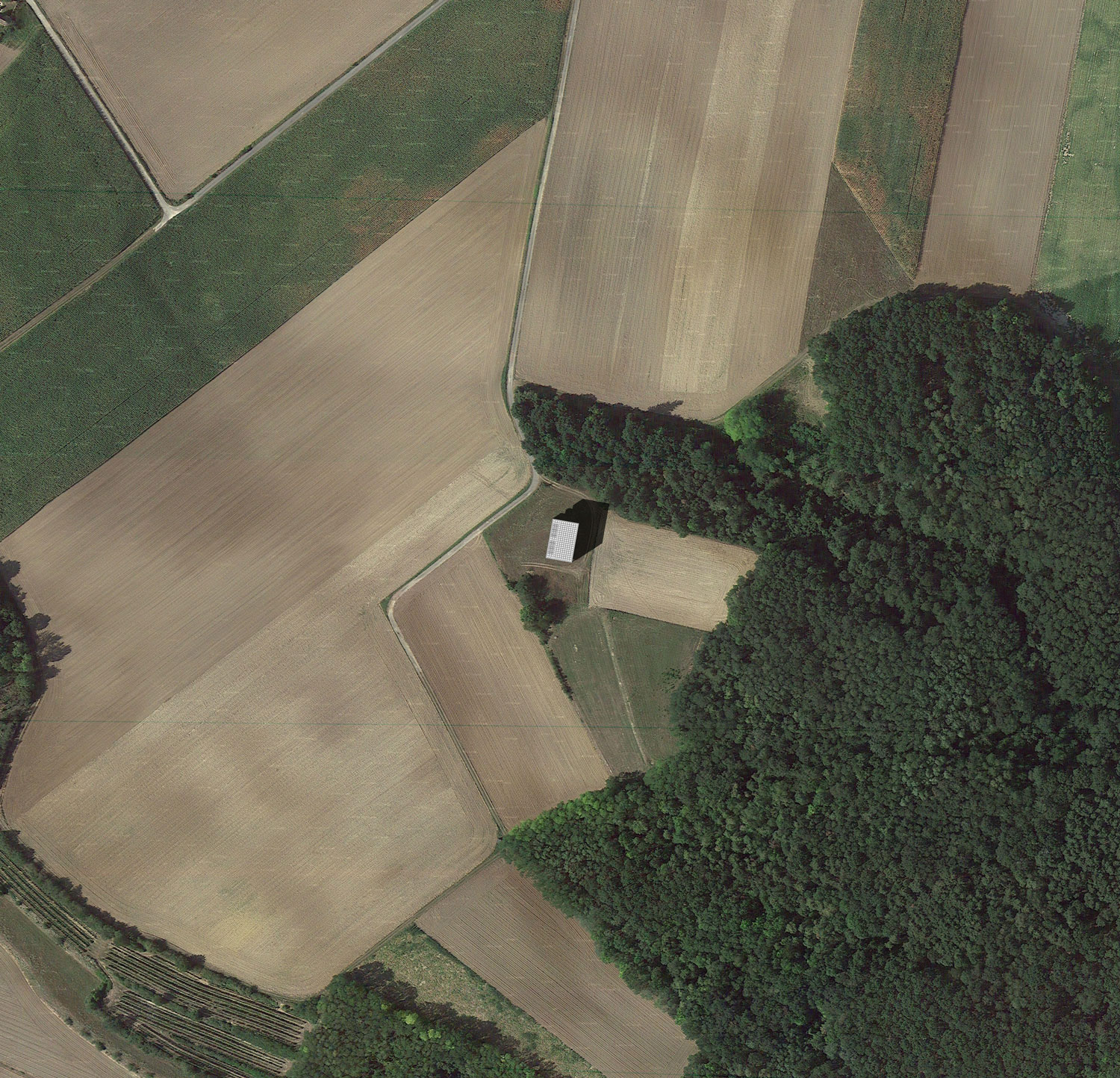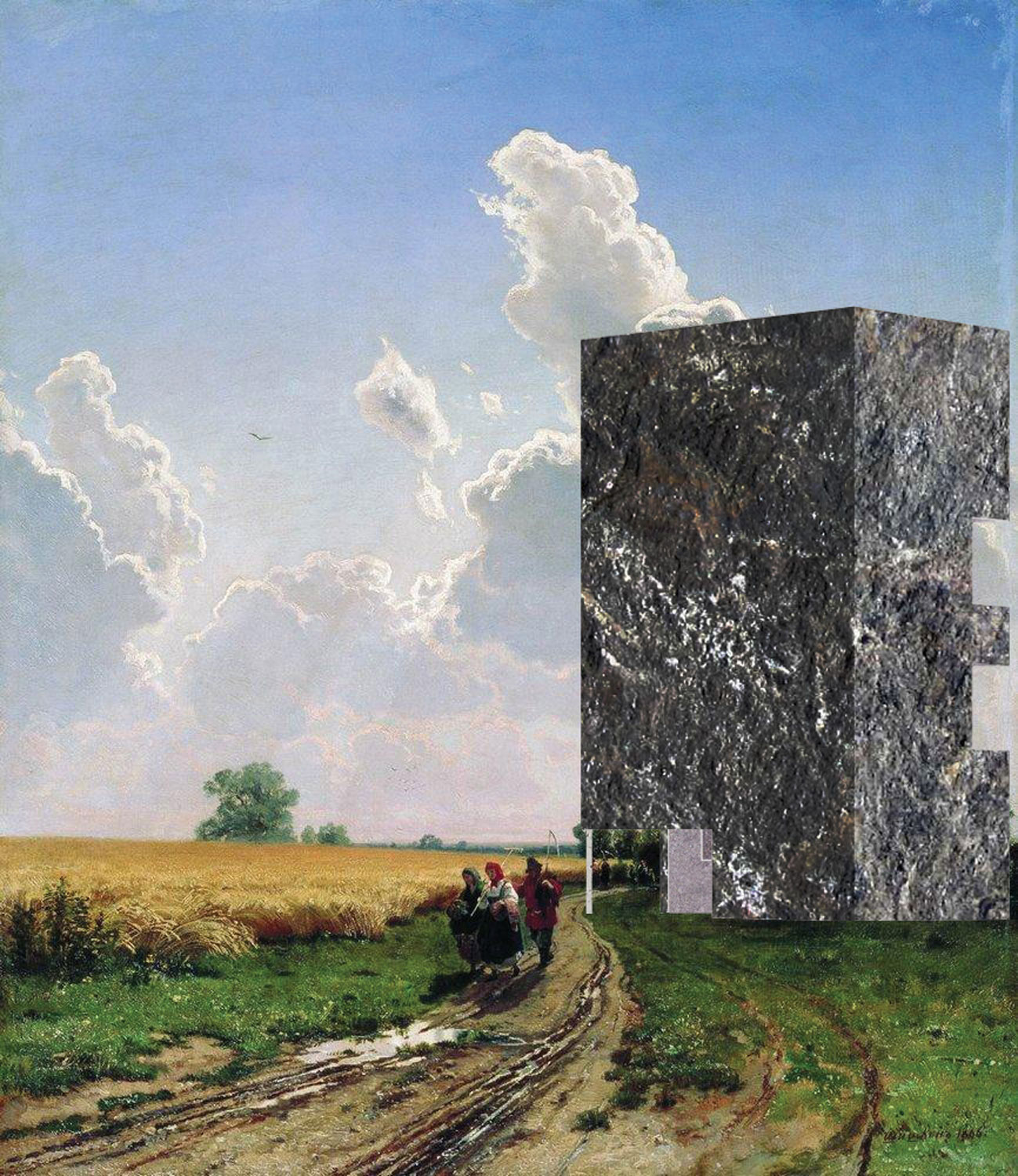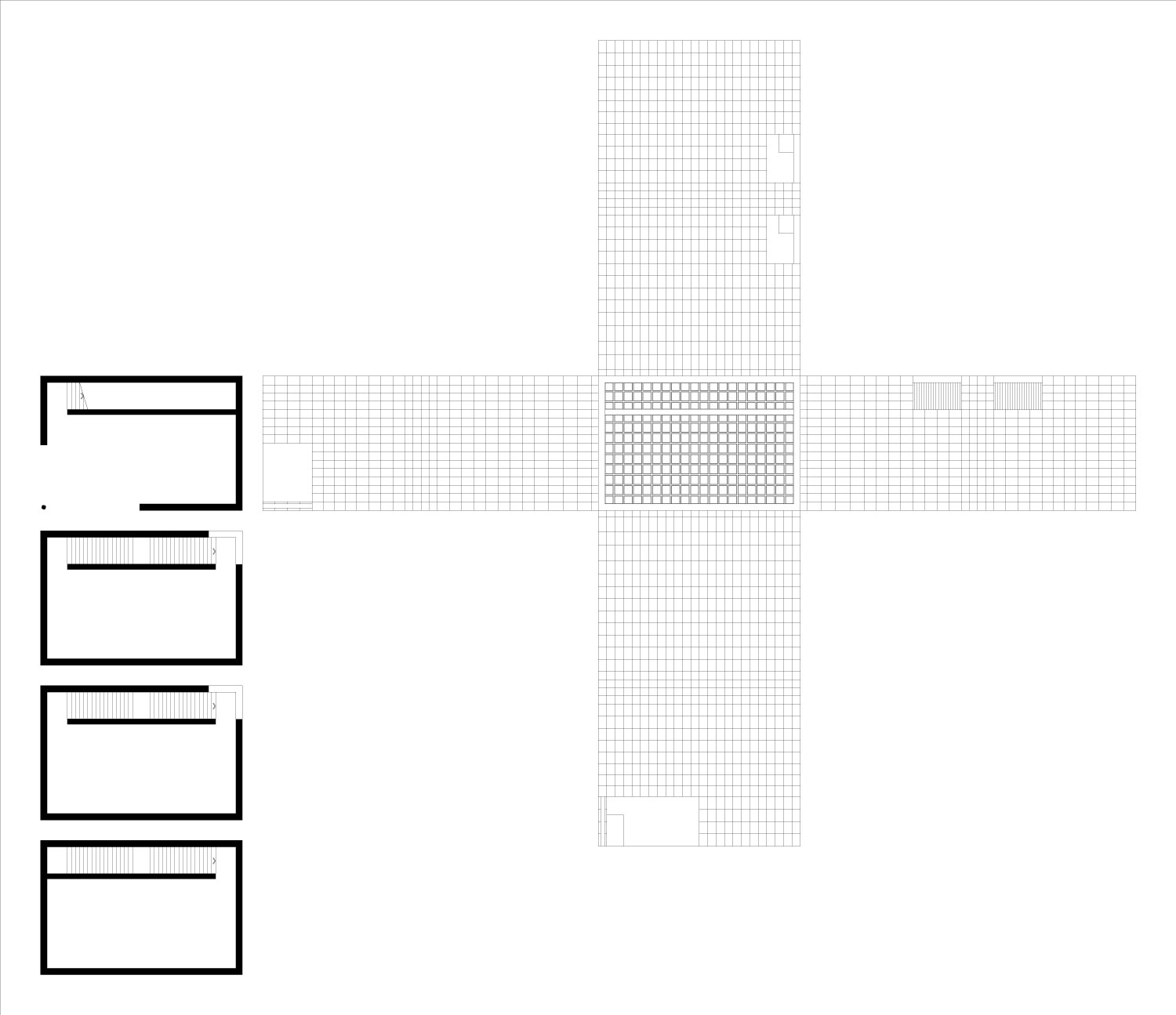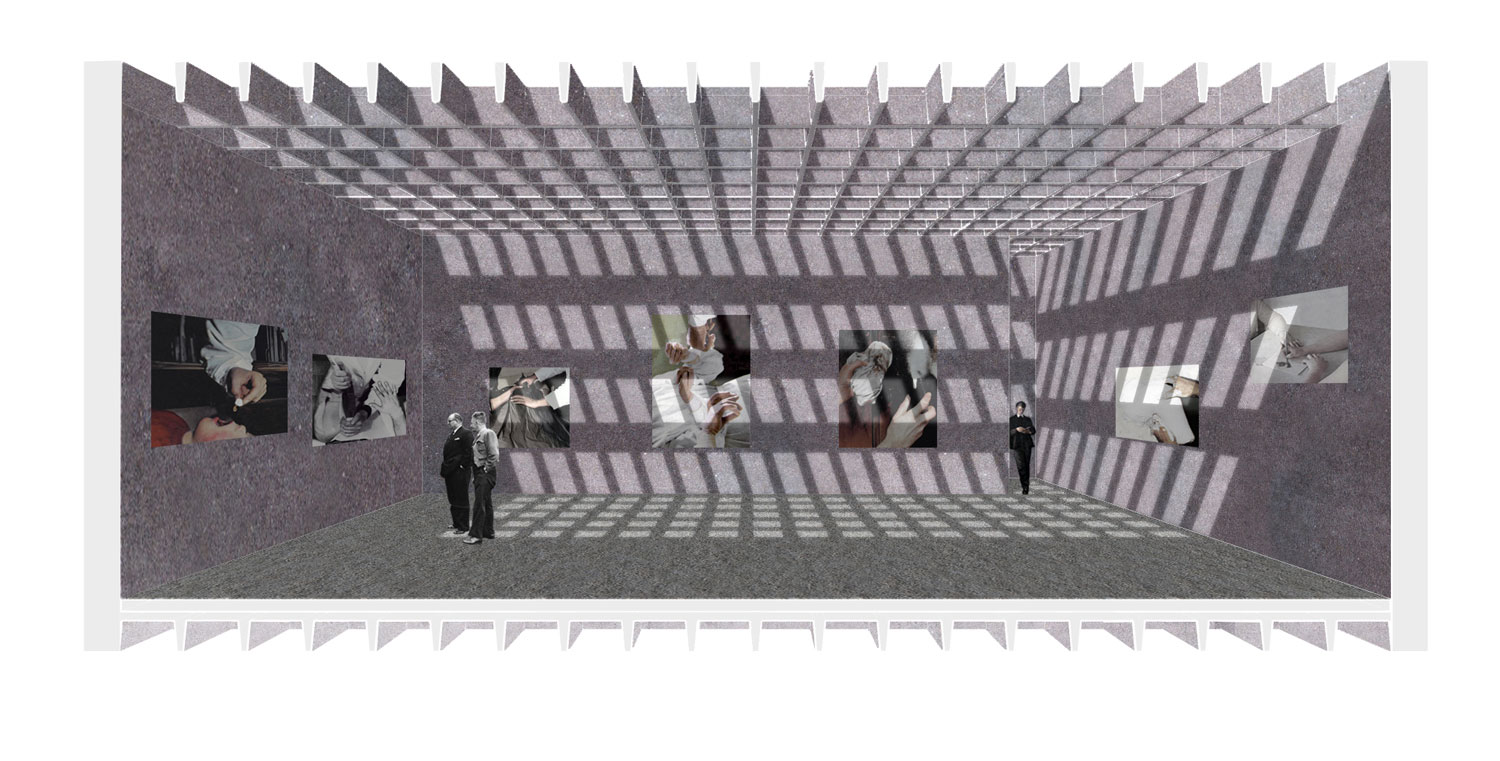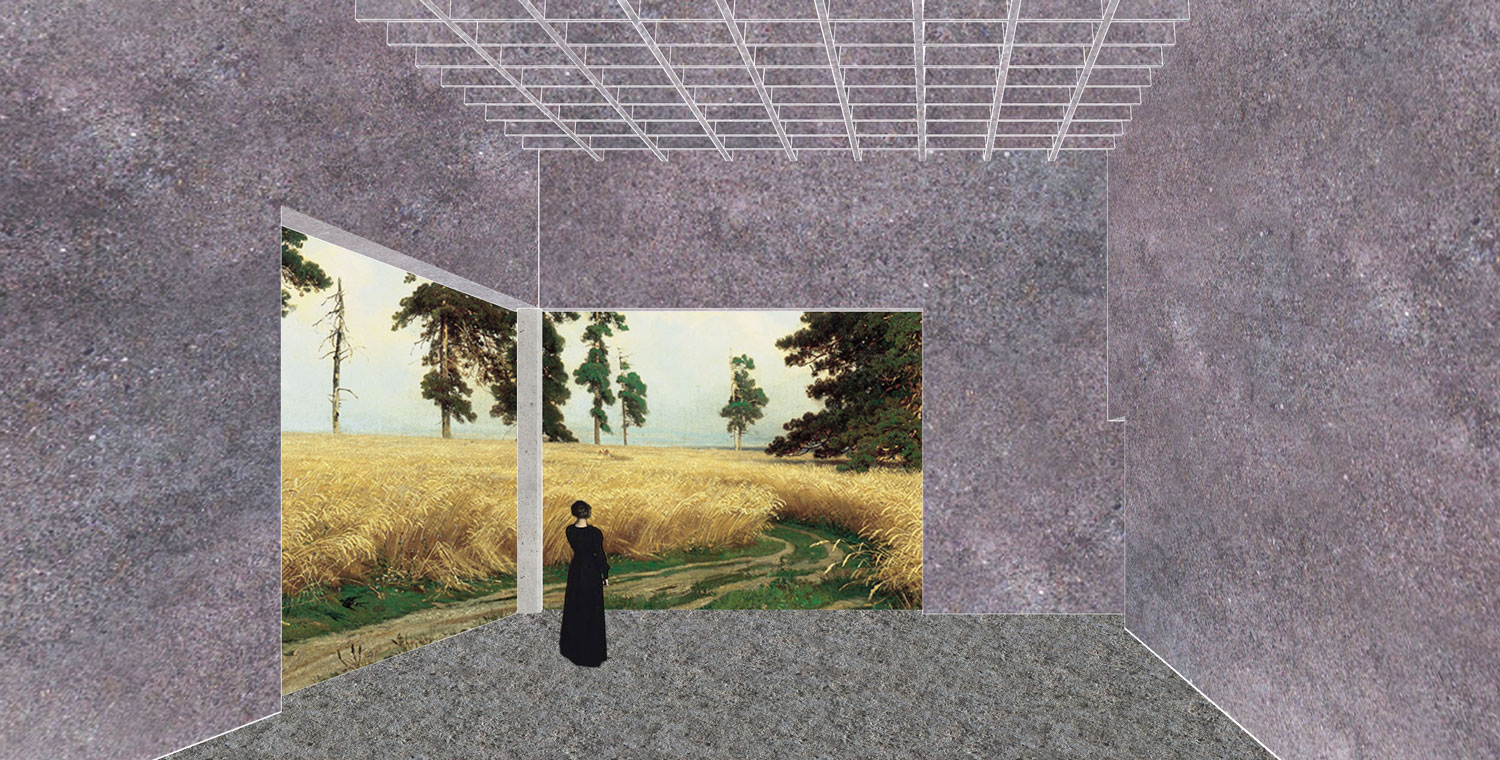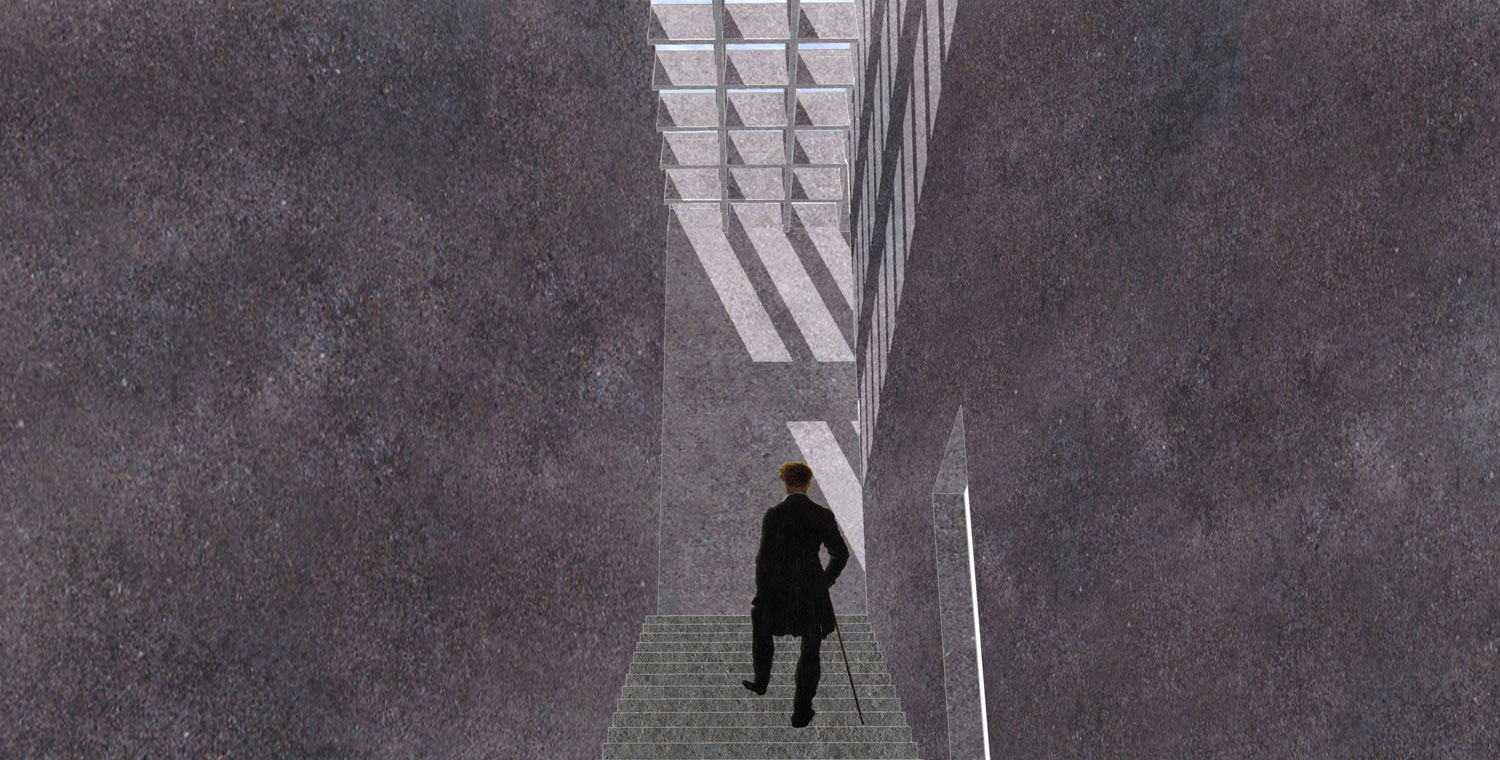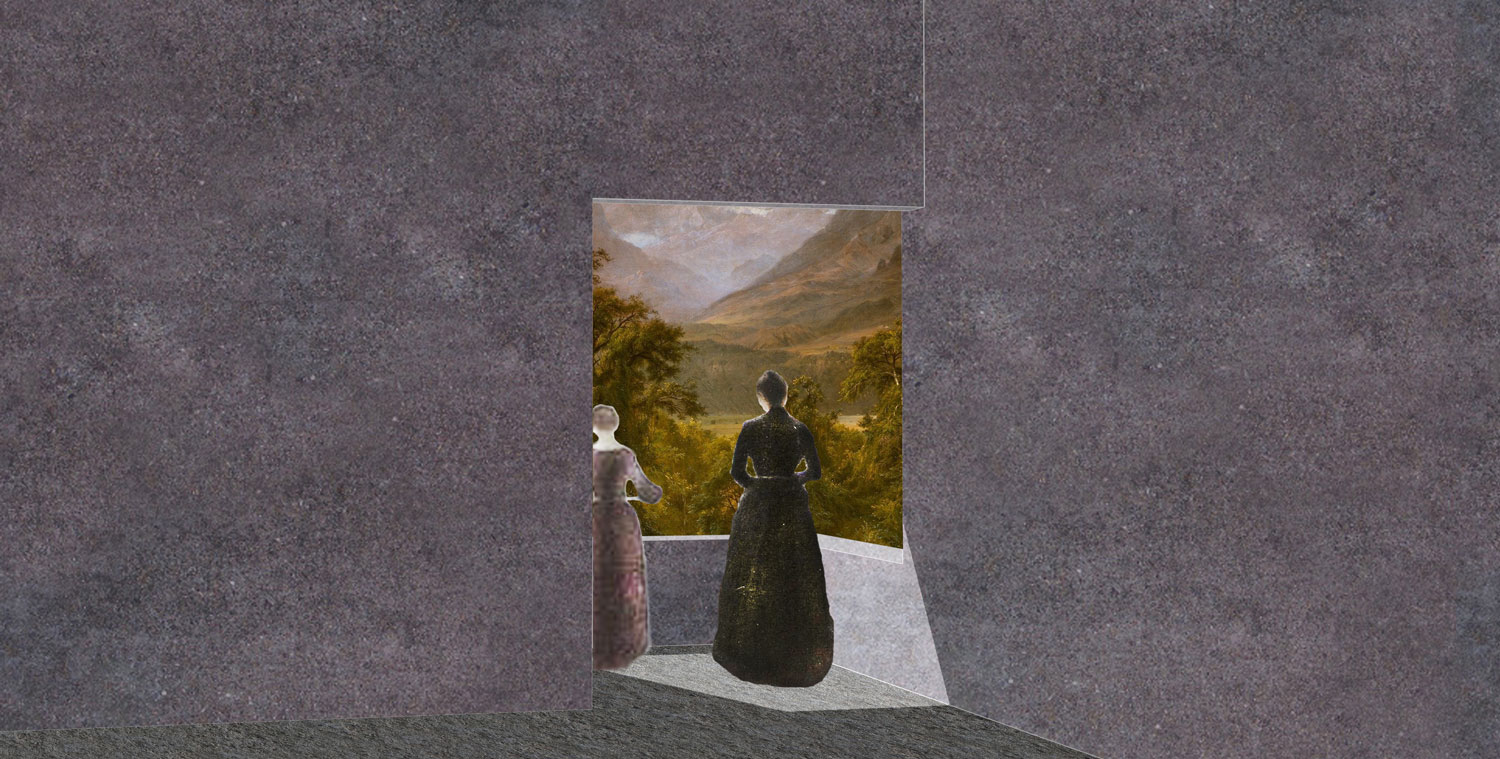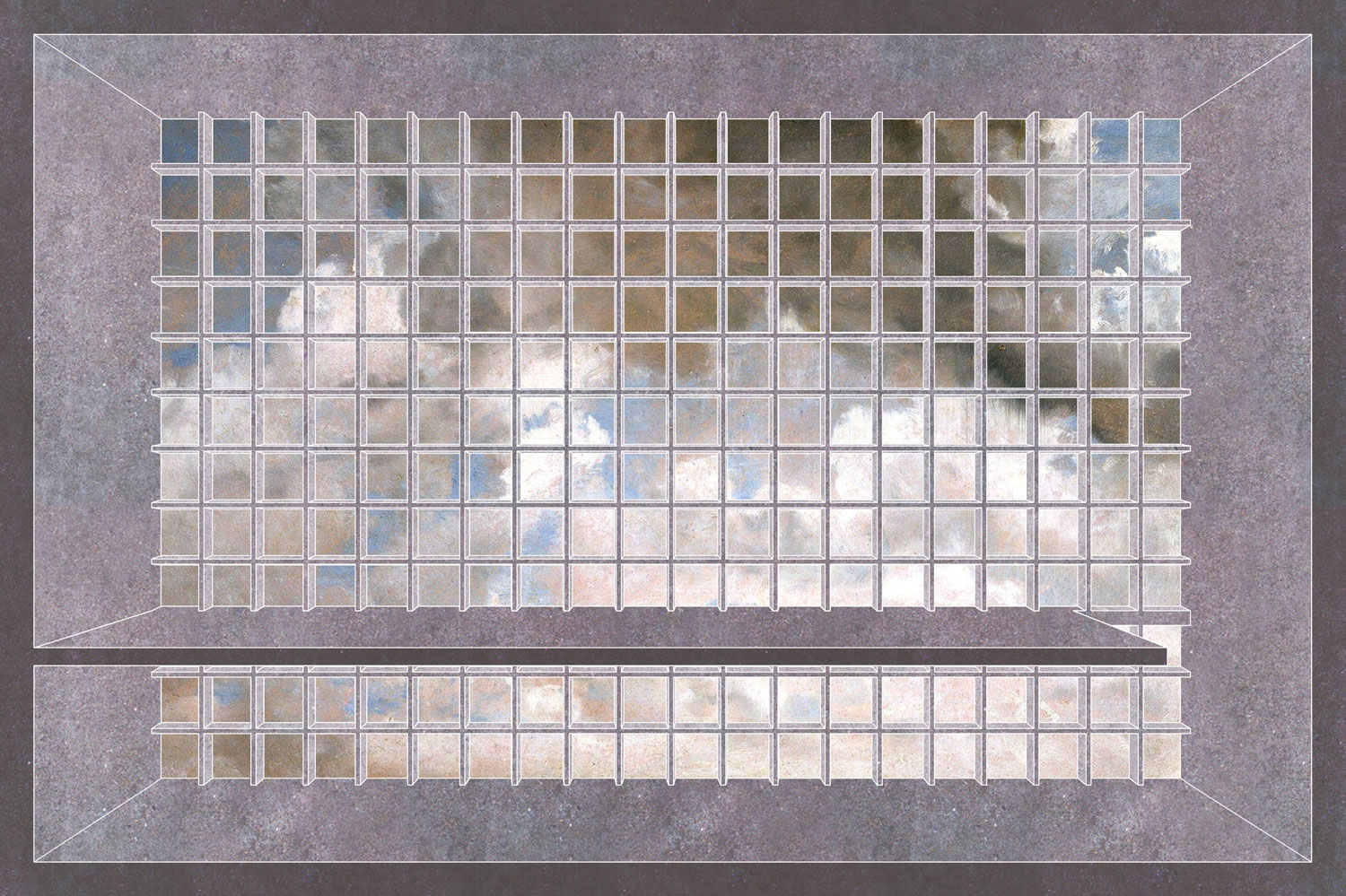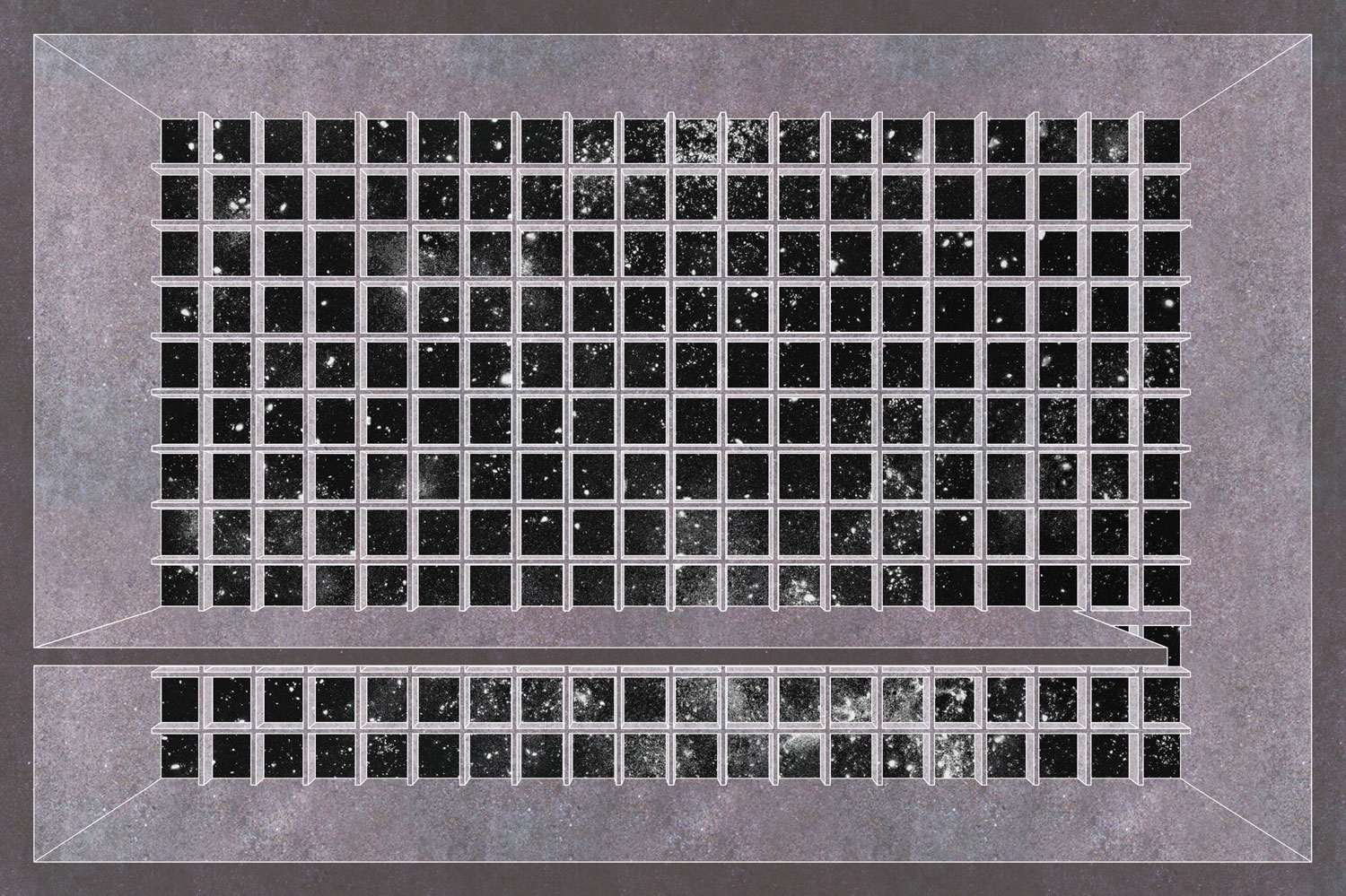1453-JHU-AT-2014
Client: Unknown
Status: Academic
Location: Kiblitz, Austria
Coordinates: 48.533340, 15.977716
Climate: Continental, Temperate
Material: Concrete
Environment: Countryside
Visualizer: Studio
Scale: Small
Types: Cultural, Observatory
The concept of this project was to create a new form for this building’s former self, but, at the same time, the hierarchy between light and darkness is retained. The first process was to fully seal the facade, offering no openings. The building becomes a monolithic stone, towering over it’s visitors. The darkness now dominates the entire interior.
An opening is made on the roof. It brings in the most light, but the light is broken down by the waffle slab. The role of light is distinguished by the opening. As it enters, its ethereal form is seemingly consumed by darkness, but at the same time, darkness never seems to actually takes over it. The role of darkness still dominates the interior, and it will remain so throughout the project. The next opening is made at the bottom corner of the building. Its sharp monolithic form will be supported by a slender cylinder column. The column is the antithesis of the building, like how light is the antithesis of darkness. The ground floor will have no doors, gates, or glass. What stands between it is the air from outside.
The last remaining openings were made through at the opposite side of the building, where the staircase is located. The opening was made to let light enter into the windowless-rooms on the first and second floor. The light is only able to enter less than a meter into the room, but that is enough to make it’s role evident in the interior. It acts as an entrance into the dark room ahead.
The visitors slip into the darkness, and it slowly veils them. The small details, such as the face, a prominent feature of the human body, disappears. It is a part of the body that everyone distinguish one from the other. Oddly, the visitors are not scared, but feel at ease. Normally, a person will experience fear when left in a dark room, but one can find comfort in the darkness with the presence of a small strand of light, that light is enough to give life in the darkest of places.
It offers a sense of hope and direction. I wanted to bring this comfort into the first and second floor before flooding the visitors with light once they reached the top floor. The calmness they feel will be no different to the one we feel before we fall asleep. Comfort can be found next to someone whose perceptible features are hidden, as one is not distracted by the noise received by the eye. One is simply left to his other four senses, such as touch, hearing, taste, and smell. A sense of intimacy will then be achieved.
